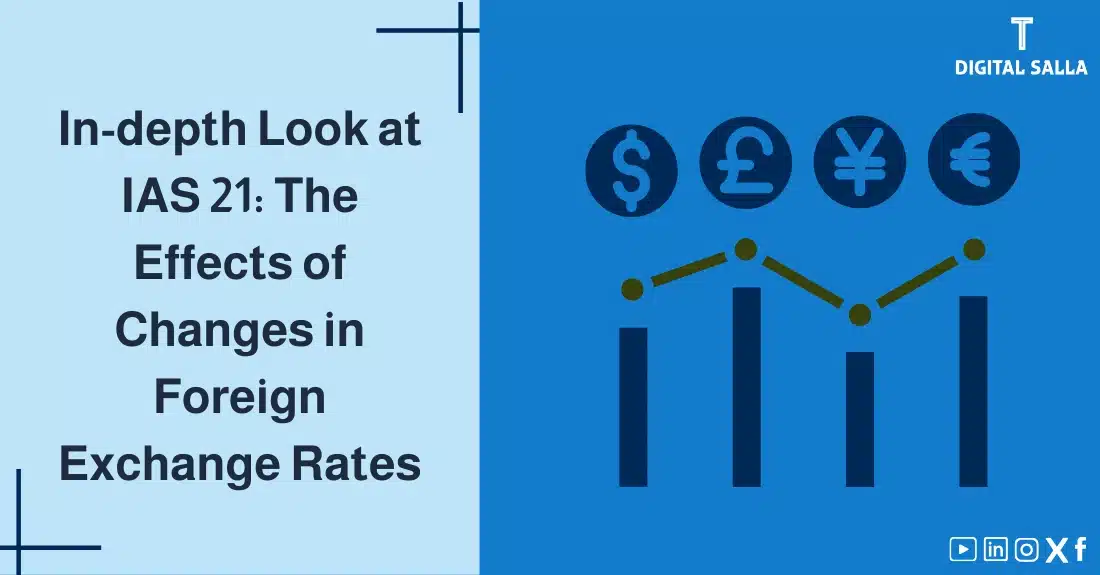In-depth Look at IAS 21 Standard: The Effects of Changes in Foreign Exchange Rates

In an increasingly interconnected and globalized world, international transactions and foreign operations are becoming an integral part of the activities of many companies. International Accounting Standard 21 (IAS 21 Standard) “The Effects of Changes in Foreign Exchange Rates” is an essential tool for understanding how changes in foreign exchange rates affect the financial statements of these companies.
This standard aims to provide a clear and consistent accounting framework for recording these transactions and translating the financial statements of foreign operations. In this article, we will delve into IAS 21 Standard, discussing its objectives, scope, and key requirements, focusing on how to determine the functional currency, account for foreign currency transactions, and translate the financial statements of foreign operations, in addition to highlighting the importance of this standard and its impact on companies with international activities.
What is IAS 21 Standard: The Effects of Changes in Foreign Exchange Rates?
IAS 21 Standard is one of the International Financial Reporting Standards that specifies how to account for foreign currency transactions and how to translate the financial statements of foreign operations into an entity’s presentation currency. The standard aims to ensure that the effects of changes in foreign exchange rates are correctly reflected in the financial statements and to provide useful and reliable information to users of these statements.
Objectives of International Accounting Standard 21 (IAS 21 Standard):
- Specify how to include foreign currency transactions and foreign operations in an entity’s financial statements: IAS 21 Standard provides clear guidance on how to record transactions conducted in foreign currencies and how to translate the financial statements of foreign subsidiaries or branches into the reporting currency of the parent entity.
- Specify how to translate financial statements into a presentation currency: IAS 21 Standard addresses how to translate an entity’s financial statements from its functional currency to a different presentation currency, if necessary.
- Provide information about the effects of changes in foreign exchange rates: IAS 21 aims to enable users of financial statements to understand the impact of exchange rate fluctuations on an entity’s financial position, financial performance, and cash flows.
- Enhance comparability: IAS 21 Standard contributes to improving the comparability of financial statements of companies that conduct transactions in foreign currencies or have foreign operations.
- Improve the quality and transparency of financial reporting: The application of IAS 21 Standard improves the quality, relevance, and reliability of financial information relating to foreign currency transactions and operations.
Scope of International Accounting Standard 21 (IAS 21 Standard):
IAS 21 Standard applies to:
- Accounting for transactions and balances in foreign currencies, except for those transactions and balances related to derivatives that fall within the scope of International Financial Reporting Standard 9 (IFRS 9) “Financial Instruments.”
- Translating the results and financial position of foreign operations that are included in the entity’s financial statements by consolidation, proportionate consolidation, or the equity method.
- Translating an entity’s results and financial position into a presentation currency.
IAS 21 Standard does not apply to:
- The presentation of cash flows arising from foreign currency transactions in the statement of cash flows (which is governed by International Accounting Standard 7).
- The hedge accounting of foreign currency items (which is governed by IFRS 9).
(Key Definitions within IAS 21 Standard are as written in the original article)
(The remainder of the translation follows the same pattern, substituting IAS 21 with IAS 21 Standard. All other information within the article remained the same.)
Conclusion:
International Accounting Standard 21 Standard (IAS 21 Standard) “The Effects of Changes in Foreign Exchange Rates” is an essential tool for understanding how changes in foreign exchange rates affect the financial statements of entities that conduct transactions in foreign currencies or have foreign operations. The application of this standard ensures that financial information relating to these transactions and operations is presented fairly and transparently, thereby enhancing the quality and reliability of financial reporting.
Understanding IAS 21 Standard is essential for accountants, auditors, investors, and anyone seeking to understand how changes in foreign exchange rates affect an entity’s financial position and financial performance. With increasing globalization and the prevalence of multinational corporations, IAS 21 Standard is increasingly important as a tool to enhance the comparability and consistency of financial reporting worldwide. Finally, technology plays a vital role in facilitating the application of IAS 21 Standard and improving the efficiency and accuracy of the financial statement translation process.
